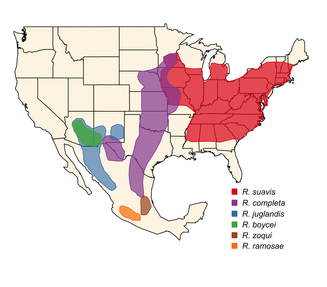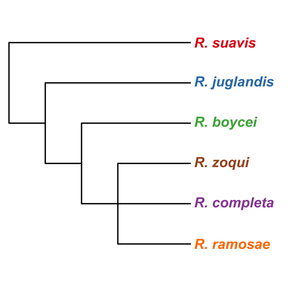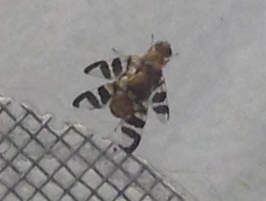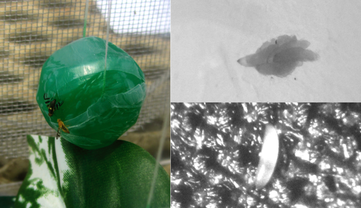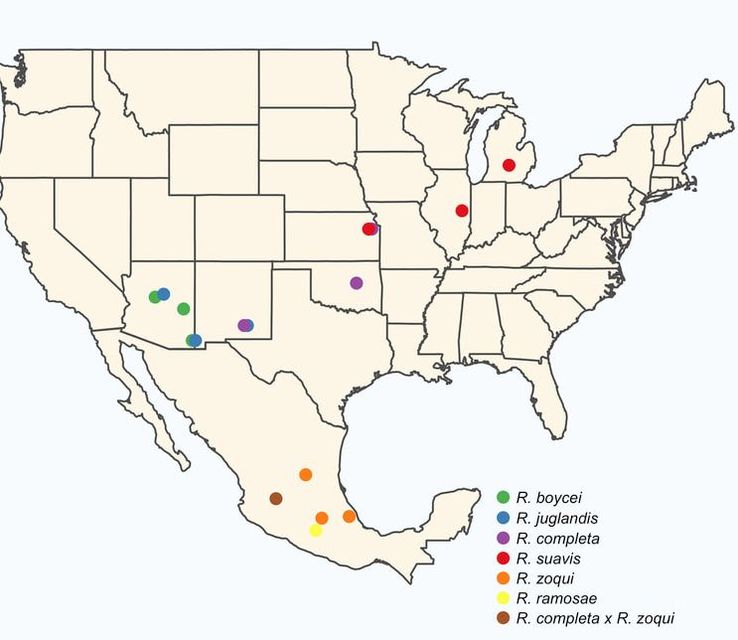I am interested in how geography, mechanisms of reproductive isolation, and genomic architecture drive speciation, using the walnut-infesting Rhagoletis suavis species group as a study system. I study the evolution of reproductive isolation from three different angles: ecology, behavior, and genomics.
Projects include:
Biogeography and ecology
Patterns of reproductive isolation
Genomic patterns of speciation
Biogeography and ecology
Patterns of reproductive isolation
Genomic patterns of speciation
What is the role of biogeography and ecology in speciation and species distributions?
In my research, I am using field collections, DNA sequencing and statistical models to determine how biogeography drove historical divergence and shapes present species distributions within the walnut-infesting Rhagoletis suavis species group, which consists of 6 species in the United States and Mexico, all living and feeding on walnut fruits.
|
I have used extensive field collecting to describe the current distribution of walnut flies in the United States, which has shifted considerably in the last four decades. I am using statistical models, including species distribution models, to determine ecological factors contributing to species movement and to predict future distributions. By determining potential future distributions, we can predict which species will experience secondary contact in the future. Because walnut flies are moving, this provides us the opportunity to observe the effects episodes of secondary contact and gene flow on the maintenance of reproductive isolation between species that have been geographically isolated for long periods of time.
|
|
I also have used mitochondrial DNA sequencing to resolve the phylogeny of the R. suavis species group. We found that the previously unresolved taxa, R. ramosae is most closely related to R. zoqui and R. completa, suggesting that migration occurred in the eastern Sierra Madre Oriental mountain range in Mexico. This pattern is shared by related Rhagoletis species groups, specifically the cherry-infesting R. cingulata and the hawthorn-infesting R. pomonella. However, the timing of divergence between the groups differ.
|
What are the patterns and rates of the evolution of pre-zygotic and post-zygotic reproductive isolation?
|
There are many different processes that can lead to reproductive isolation and drive speciation. The accumulation and strength of isolating barriers has been the subject of many studies of speciation; however it can be a challenging task, particularly in determining the initial means of isolation and the evolutionary forces that lead to reproductive isolation. I am investigating the patterns of pre-zygotic and post-zygotic isolation that maintain reproductive isolation across walnut flies.
|
|
For pre-zygotic isolation of walnut flies, am testing ecological isolation through diverging post-winter adult eclosion timing and behavioral isolation through mating trials, to determine the extent to which different species will mate with one another. Walnut flies exhibit far less pre-zygotic behavioral isolation as expected due to differing body coloration and wing patterns, therefore post-mating isolation factors may play a larger role than previously hypothesized. I am testing the rates of egg hatching between different species.
|
What is the effect of gene flow on patterns of speciation in the genome?
|
Much attention has been given the architecture of the genome and how it contributes to divergence, including the number of genes responsible for differentiation, the effects sizes of differentiating regions, and how they are arranged across the genome. My research works on understanding the geography and reproductive isolation of walnut flies, which builds into the study of the genomic architecture of species group. I am using the reduced representation sequencing technique, RADseq, to understand how geography, selection, and recombination affect the restriction of gene flow in the genome during speciation. I am sequencing populations of walnut flies throughout their ranges, in areas of isolation and co-occurrence, in the United States. and Mexico.
|
